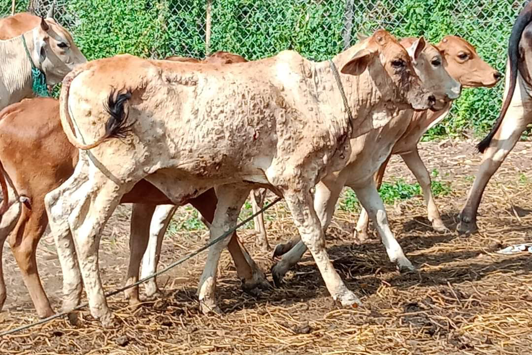LSD is a reportable disease in Western Australia.
Although LSD has never occurred in Australia, it is present in neighbouring countries and is an emerging biosecurity threat. Early detection and reporting of LSD increases our chances of control and eradication if LSD enters Australia. The presence or suspicion of LSD must be reported in WA (see below how to report).
LSD is a viral disease that affects cattle and buffalo, it does not affect other types of livestock or humans. LSD is primarily transmitted and spread by biting insects, which mechanically transfers the virus between cattle. If LSD were introduced into Australia, the disease can also be spread through the movement of infected cattle and buffalo and potentially by contaminated equipment, hides or skins
LSD is a significant biosecurity threat to the Australian cattle and buffalo industries as an incursion and outbreak would result in a loss of international live cattle export market access. The disease can also lead to significant animal health consequences and production losses in cattle/buffalo due to loss of condition, damaged hides and reduced reproductive rates.
LSD has never occurred in Australia but is an emerging threat, as it continues to spread through Asia and within neighbouring countries of Australia. Further information on the current global situation can be found at the World Organisation for Animal Health.
The potential pathways for the entry of LSD into Australia are largely mitigated through biosecurity controls. the movement of live animals is regulated through strict biosecurity controls at the international border. A potential pathway includes insects entering on returning vessels, however, strict insect control protocols are implemented on returning vessels to ensure effective disinfestation and reduce the likelihood of this entry pathway.
It is thought that entry into northern Australia via insects carried across from a neighbouring infected country via strong winds during monsoonal weather is highly unlikely.
Australian governments and industry are currently undertaking activity to identify and obtain regulatory approval of an appropriate vaccine to have available if an incursion occurs. It is not intended to vaccinate animals before an LSD incursion. If Australia vaccinated animals against LSD prior to an incursion, then Australia would lose its LSD disease-free status, in accordance with World Organisation for Animal Health standards, which would negatively affect international export market access.
Clinically, disease may range between no/mild clinical signs, where Bos indicus (northern) breeds may be less severely affected and may only show subtle signs which can be difficult to identify, to severe illness.
Affected cattle and buffalo develop a fever of up to 41.5°C and may also have watery eyes, nasal discharge and excess salivation (drooling).
Within 1–2 days, raised nodules up to 50mm in diameter commonly appear around the head, neck, limbs and genitals and may cover the entire body. Scabs form on these nodules and may fall off, leaving large holes in the hide that can become infected.
The brisket and legs may appear swollen and cattle may look lame or be very reluctant to move. In severely affected animals, lesions can also develop in the respiratory, and gastrointestinal, tract resulting in pneumonia.
Some endemic diseases can present similarly to LSD including but not limited to bovine papular stomatitis and dermatophytosis. Other reportable diseases can also present similarly, such as Rinderpest which is exotic to Australia.
The main methods of spread of LSD virus is through movement of infected animals and via infected biting arthropods (such as ticks, biting flies and mosquitoes).
LSD can also be spread through direct contact between animals, via secretions and excretions. Contaminated feed, water, vehicles and re-use of equipment, for example, repeated use of needles on different animals, can all spread the disease.
Infected bulls can excrete the virus in semen and experimental transmission has been demonstrated.
The implementation of good biosecurity practices that will help to reduce the likelihood of many other diseases are also applicable to LSD and include:
- Isolate new animals for 7–10 days.
- Keep fences secure to ensure stray or feral animals do not enter.
- Have an allocated area away from livestock where contractors/farm visitors park.
For more biosecurity information, visit the following resources page for producers.
The department provides subsidies for disease investigations where the signs are unusual or affecting several animals in a group. Ask your veterinarian about the Significant Disease Investigation Program.
Documents
-
Lumpy skin disease FAQspdf (167 KB)
-
Lumpy skin diseasepdf (330 KB)

